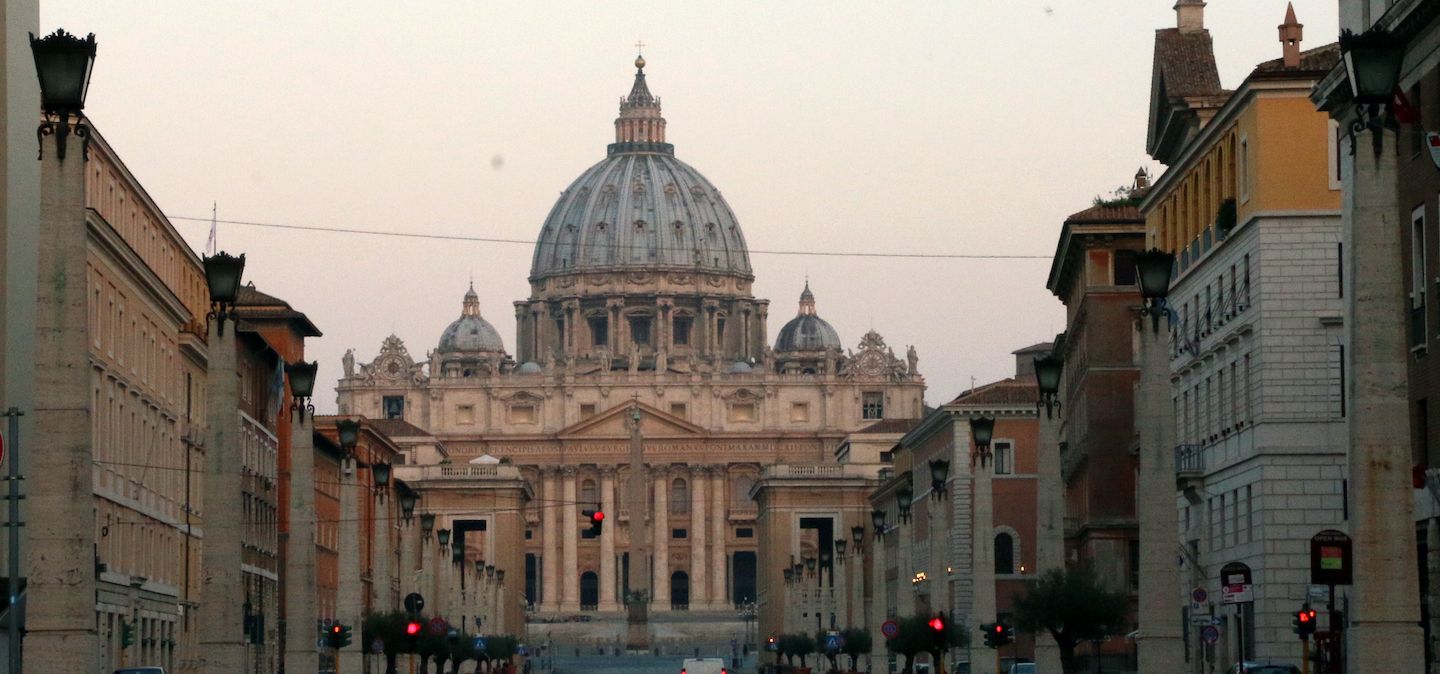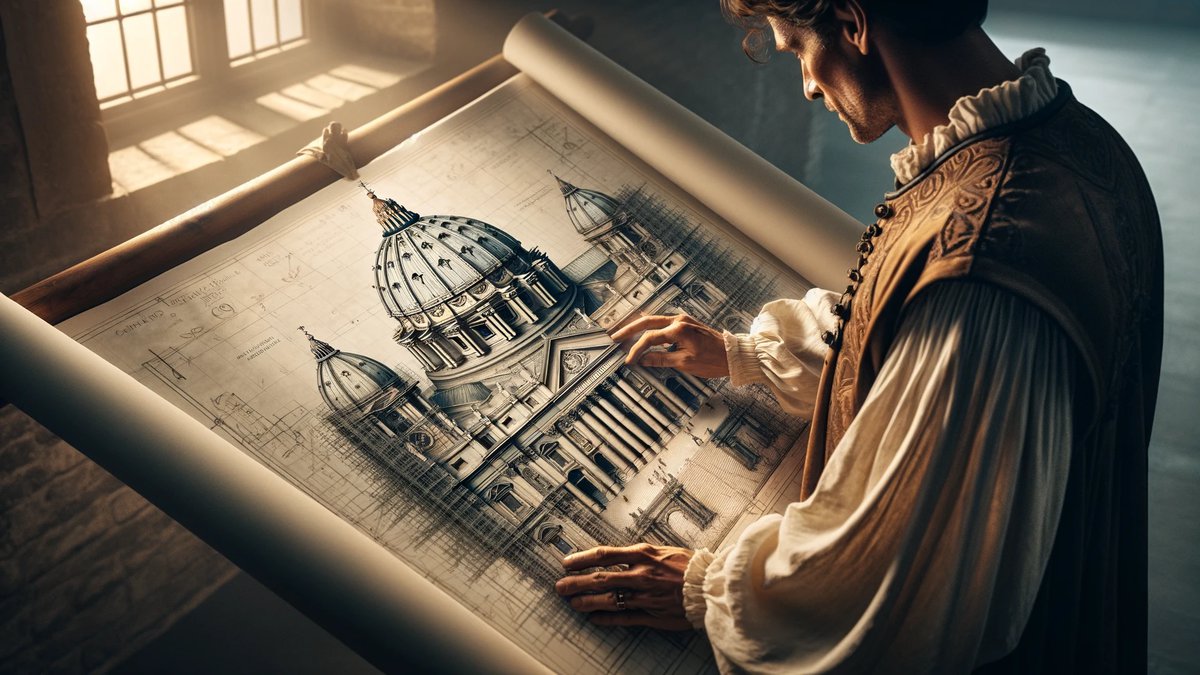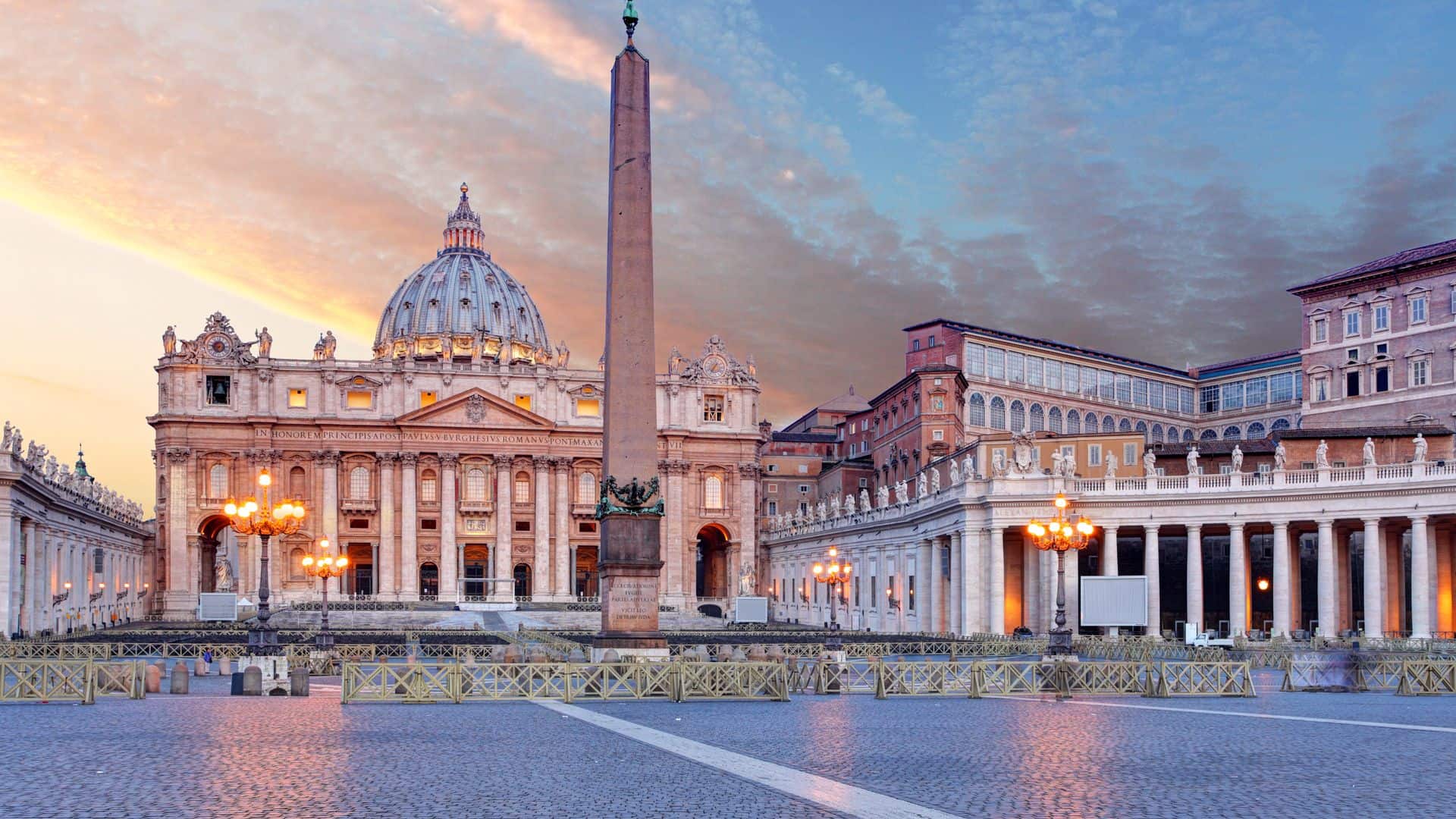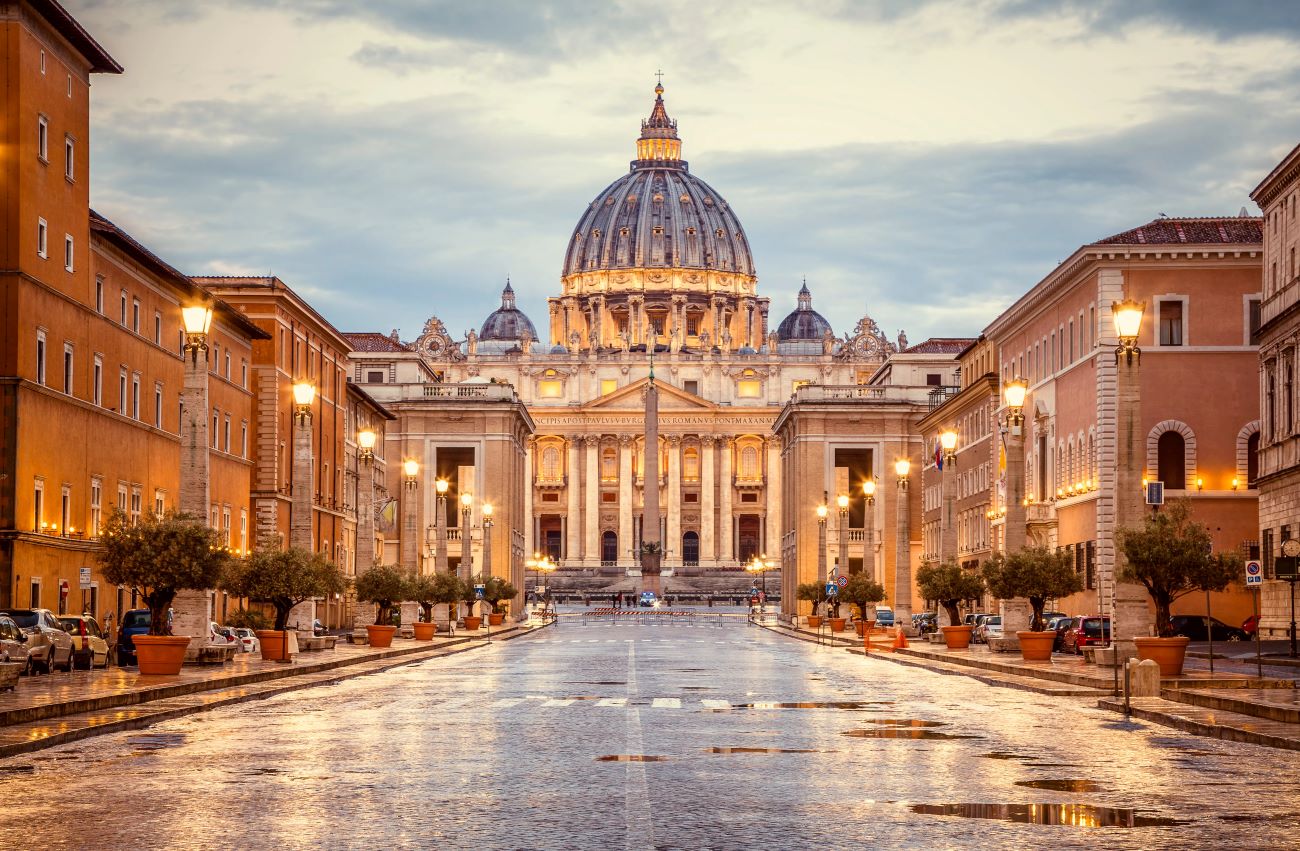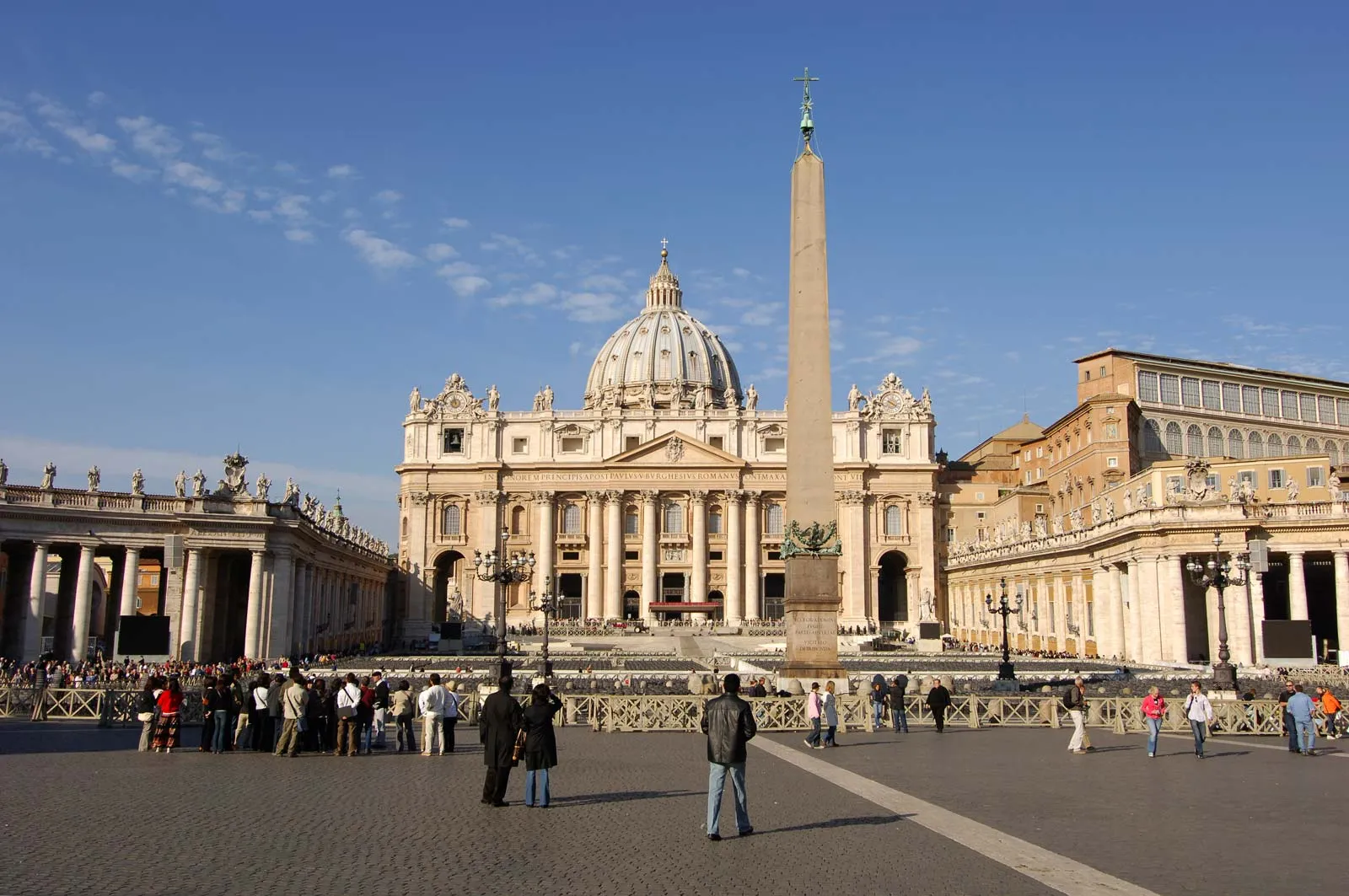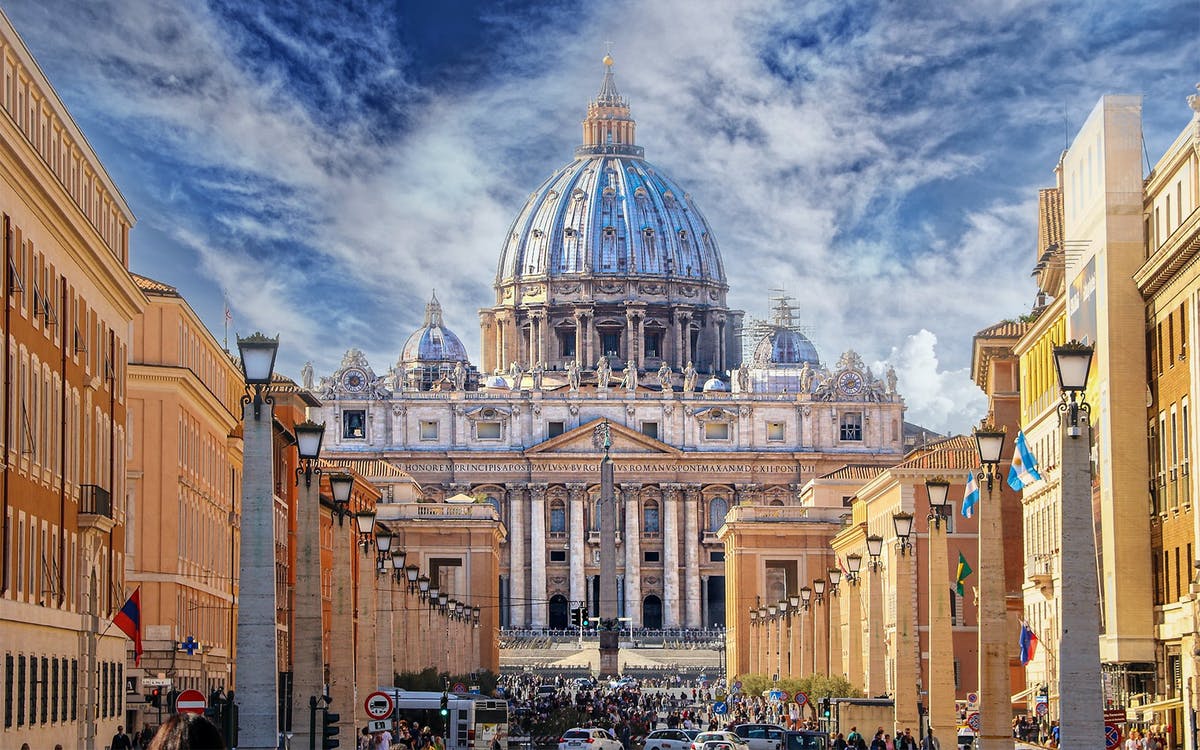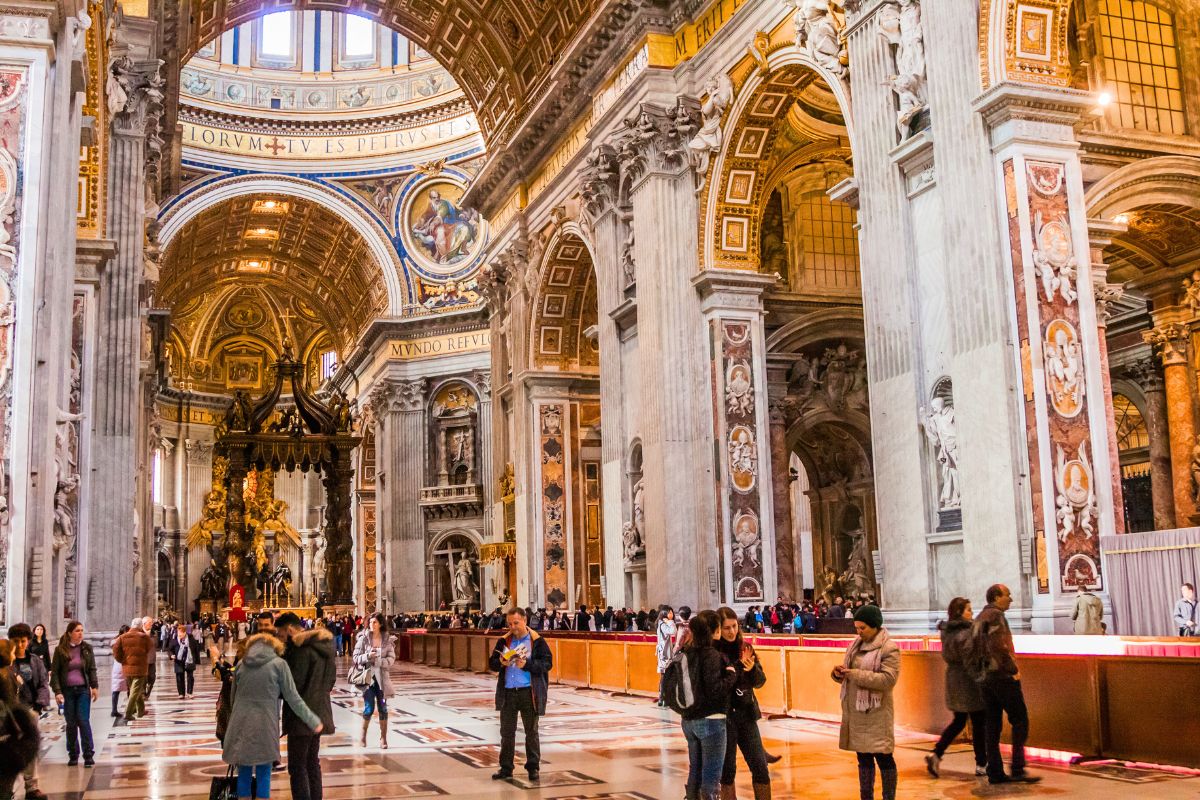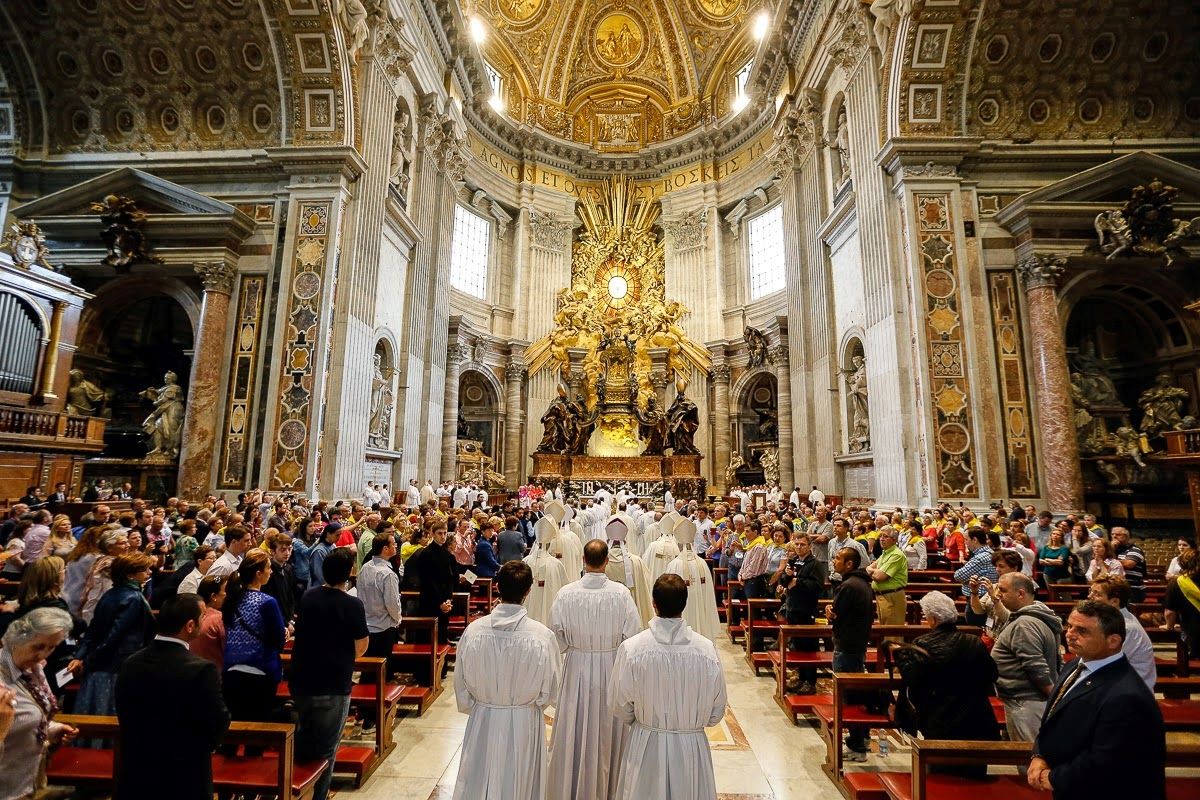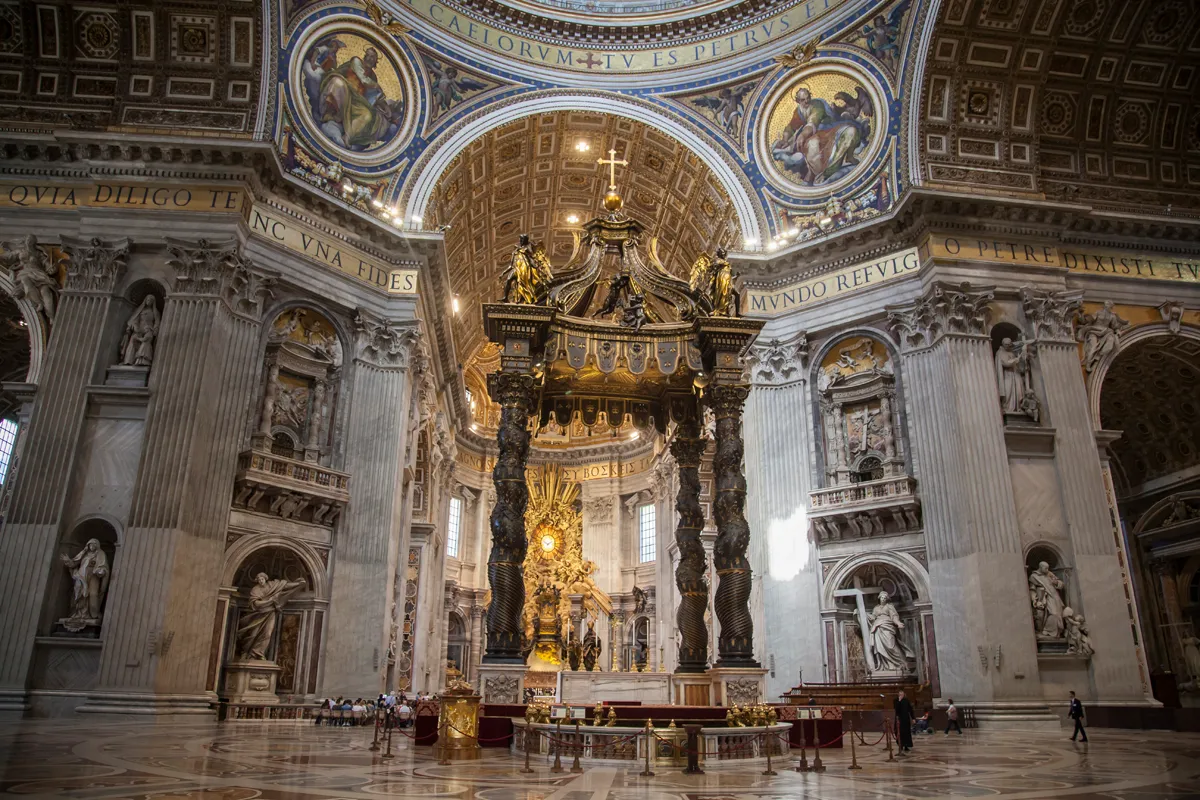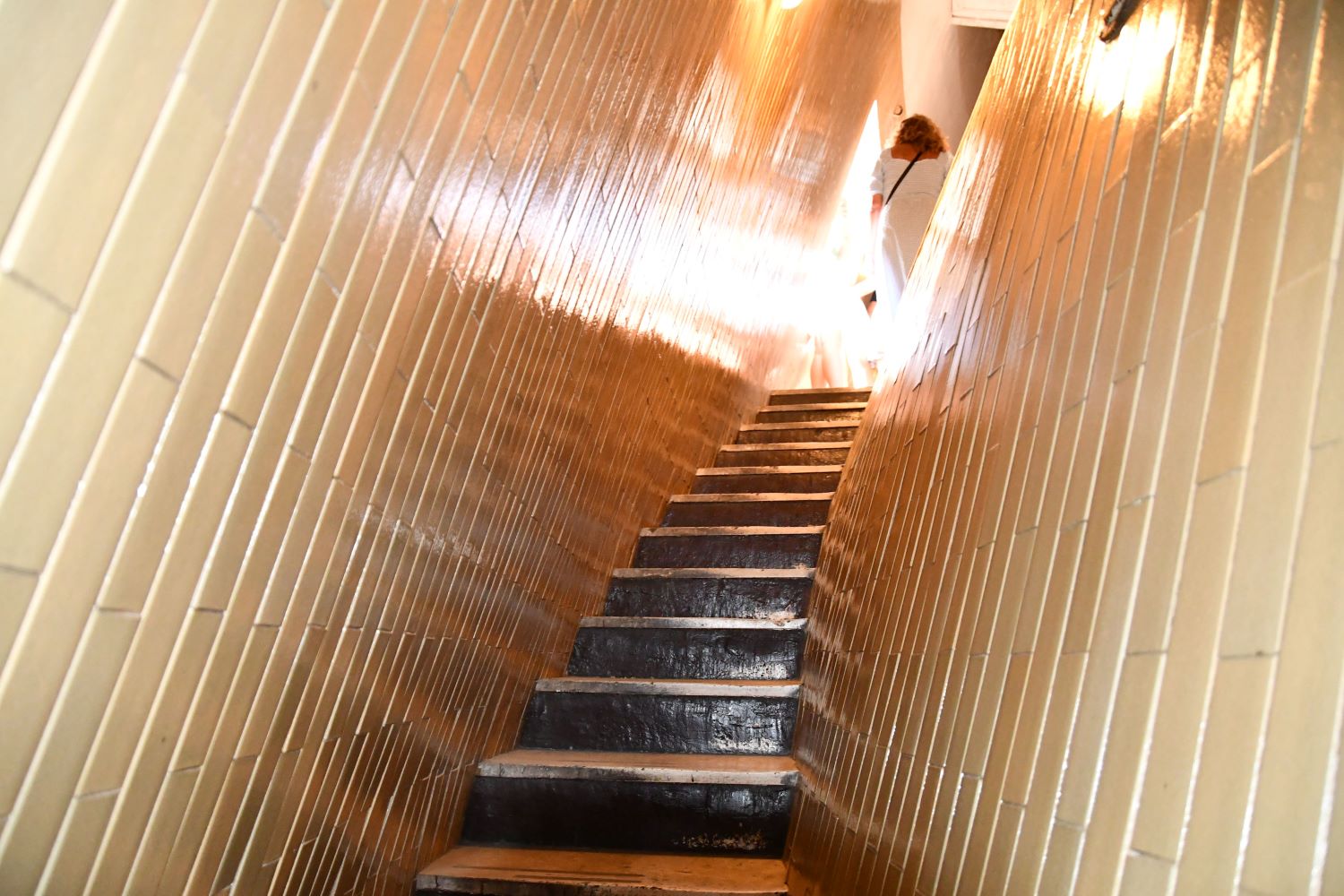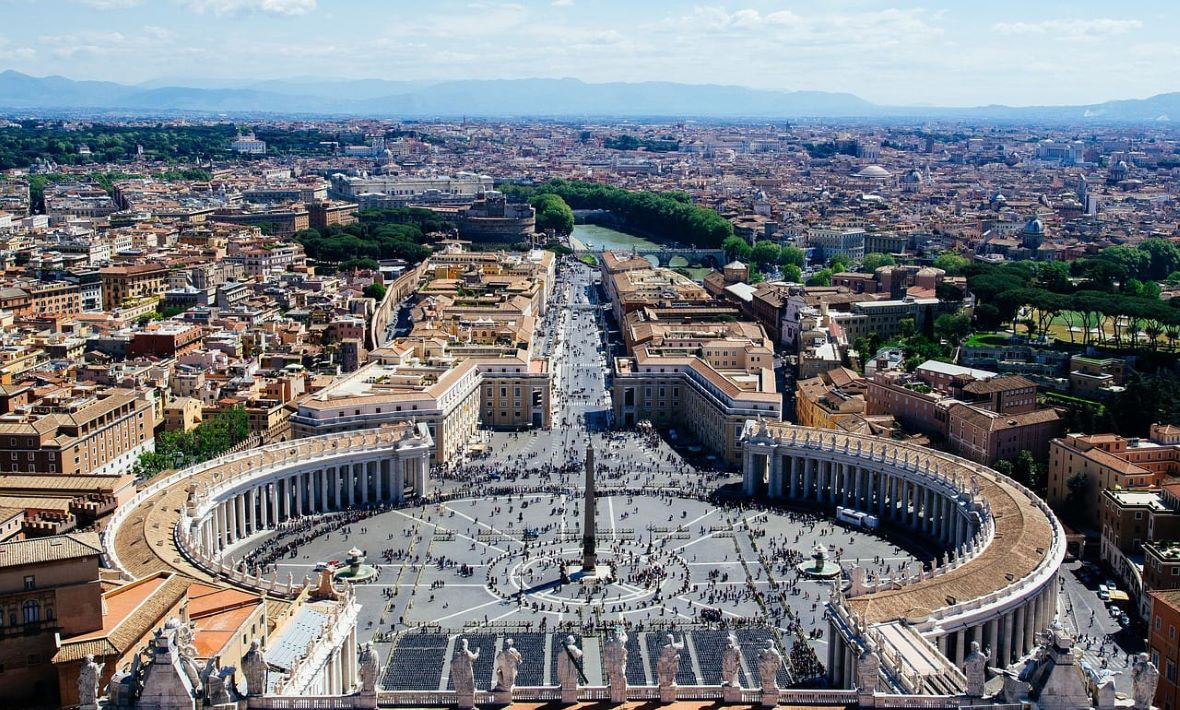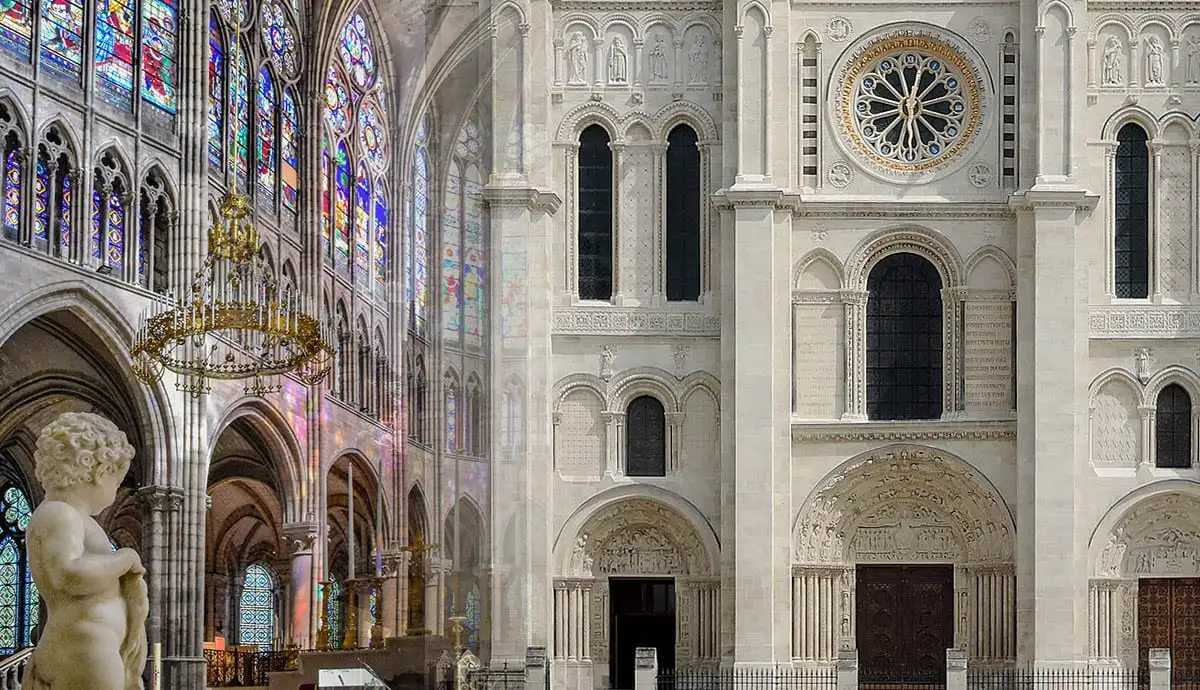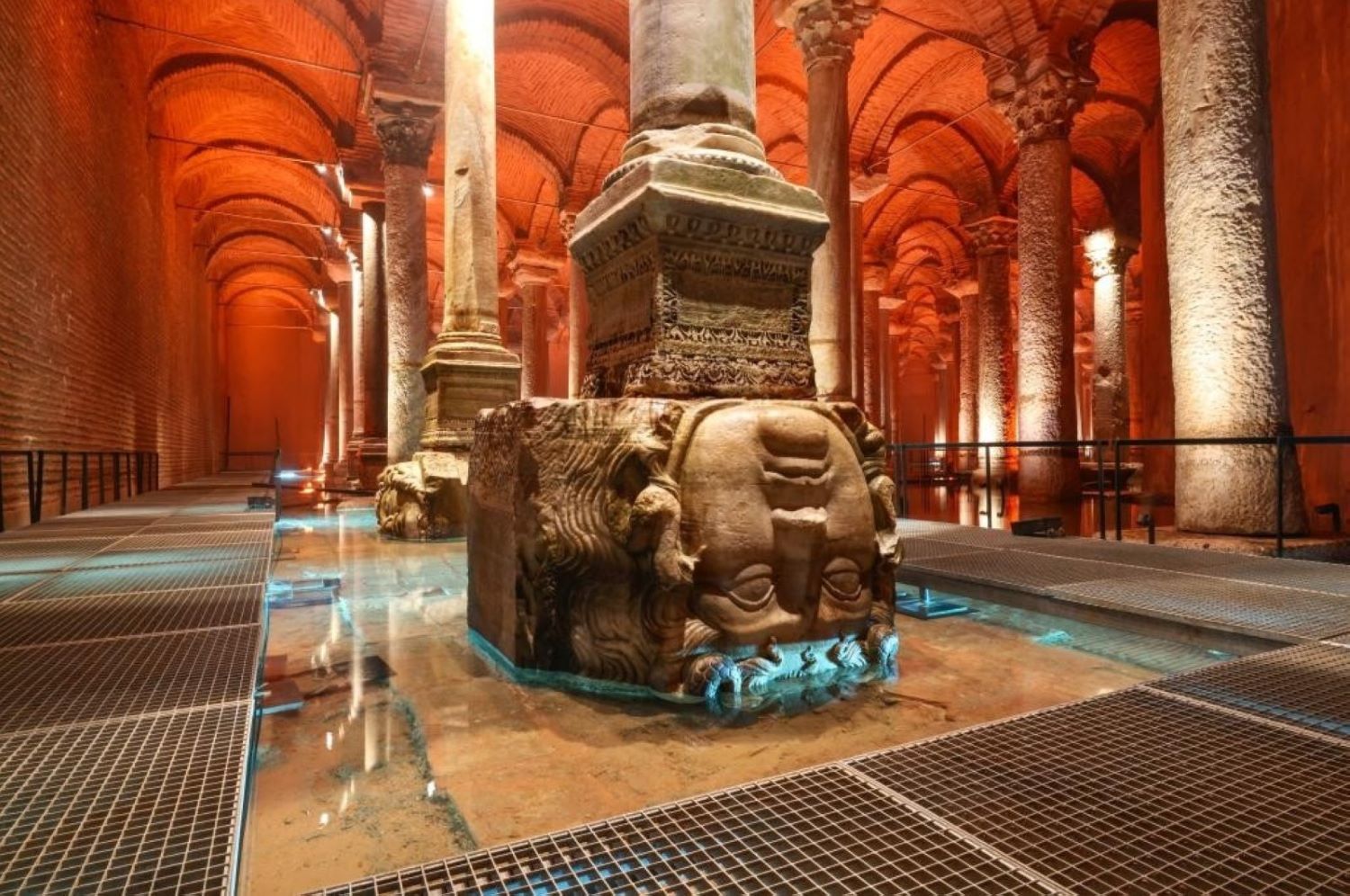Home>Arts and Culture>Who Built St. Peter’s Basilica
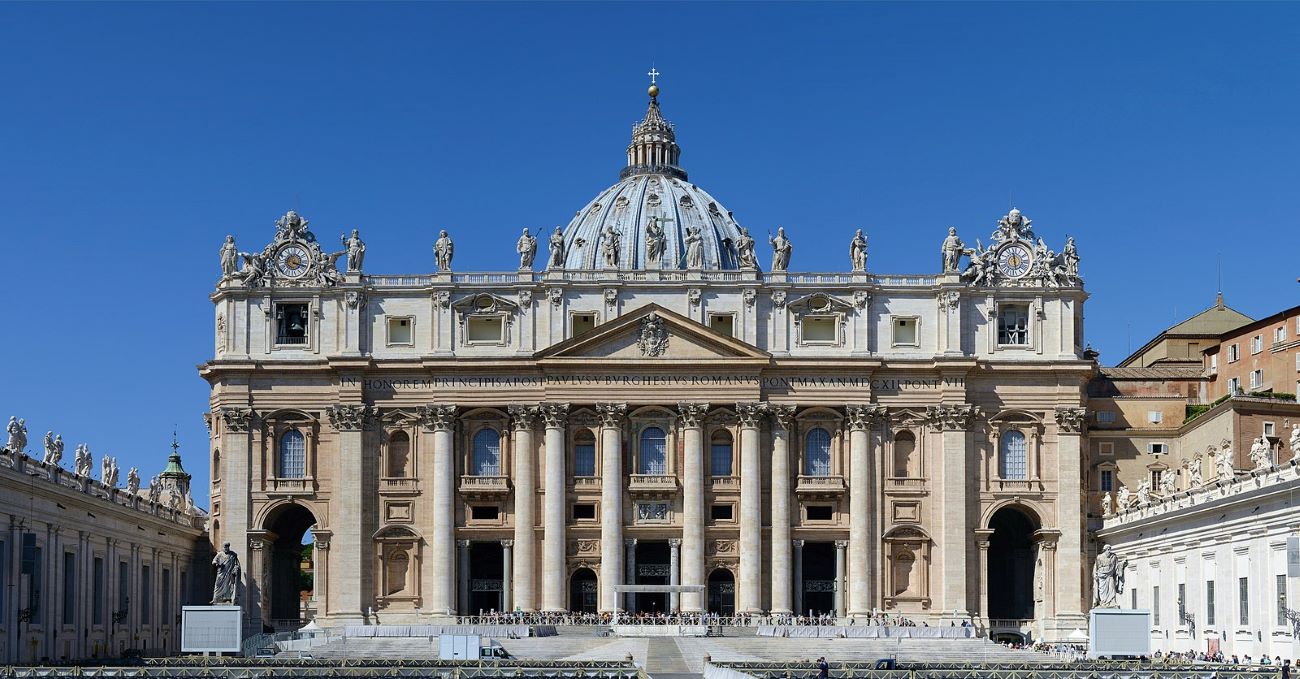

Arts and Culture
Who Built St. Peter’s Basilica
Published: February 10, 2024
Jason DeRose, Managing Editor at Christian.net, uses his expertise in religion and journalism to deepen understanding of faith's societal impacts. His editorial leadership, coupled with a strong academic background, enriches the platform’s diverse content, earning him recognition in both journalism and religious circles.
Discover the fascinating history behind the construction of St. Peter's Basilica, a masterpiece of arts and culture that has stood the test of time. Learn about the architects, artists, and visionaries who brought this iconic structure to life.
(Many of the links in this article redirect to a specific reviewed product. Your purchase of these products through affiliate links helps to generate commission for Christian.net, at no extra cost. Learn more)
Table of Contents
Introduction
St. Peter's Basilica, a magnificent masterpiece of Renaissance architecture, stands as a symbol of grandeur and spiritual significance in the heart of Vatican City. This iconic structure, with its awe-inspiring dome and ornate façade, has captured the imagination of visitors and pilgrims for centuries. The basilica's construction is a testament to the unwavering devotion and artistic prowess of countless individuals who dedicated their lives to its realization.
From its humble beginnings to its eventual transformation into a monumental edifice, the story of St. Peter's Basilica is a captivating journey through time, marked by triumphs, setbacks, and the enduring spirit of human ingenuity. As we delve into the history of this architectural marvel, we will uncover the remarkable tales of visionaries, artisans, and leaders who left an indelible mark on this extraordinary feat of engineering and artistry.
The construction of St. Peter's Basilica represents a convergence of religious fervor, political ambition, and artistic innovation. It serves as a testament to the enduring legacy of the Catholic Church and the enduring impact of the Renaissance era on the world of architecture. As we embark on this exploration, we will unravel the intricate layers of history and delve into the captivating narratives that have shaped the creation of this monumental structure.
Join us on a journey through time as we unravel the captivating tale of St. Peter's Basilica, from its humble origins to its status as a global architectural marvel. Through this exploration, we will gain a deeper appreciation for the visionaries and artisans who dedicated themselves to the realization of this enduring symbol of faith and human achievement.
Read more: Who Designed St. Peter’s Basilica
Early Construction Efforts
The origins of St. Peter's Basilica can be traced back to the 4th century when Emperor Constantine laid the foundation for the original structure. Over the centuries, the basilica underwent several transformations, reflecting the evolving architectural styles and the shifting tides of history. However, it was during the Renaissance period that the ambitious project to rebuild the basilica in its present form took shape.
In 1506, Pope Julius II, a visionary leader with a fervent desire to leave a lasting mark on the papacy, initiated the ambitious endeavor to construct a new basilica that would surpass its predecessors in grandeur and magnificence. The task of overseeing the project was entrusted to a series of esteemed architects, including Donato Bramante, whose innovative designs laid the groundwork for the basilica's iconic dome.
The early construction efforts were marked by a meticulous attention to detail and a relentless pursuit of architectural excellence. Skilled artisans and laborers toiled tirelessly, employing traditional construction techniques alongside innovative methods to bring the grand vision of the basilica to life. The sheer scale of the undertaking posed formidable challenges, yet the unwavering dedication of those involved propelled the project forward.
As the foundations were laid and the walls began to rise, the basilica's imposing presence began to take shape, casting a profound impression on all who beheld its emerging form. The early construction efforts were a testament to the collective determination of the architects, craftsmen, and laborers who labored ceaselessly to realize the ambitious vision set forth by Pope Julius II.
The evolving design of the basilica reflected the prevailing artistic and architectural trends of the Renaissance, incorporating elements of classical symmetry and harmonious proportions. The fusion of artistic innovation and structural ingenuity defined the early stages of construction, setting the stage for the awe-inspiring edifice that would eventually grace the Vatican skyline.
As the foundations were laid and the walls began to rise, the basilica's imposing presence began to take shape, casting a profound impression on all who beheld its emerging form. The early construction efforts were a testament to the collective determination of the architects, craftsmen, and laborers who labored ceaselessly to realize the ambitious vision set forth by Pope Julius II.
The early construction efforts laid the groundwork for the monumental undertaking that would unfold in the years to come, setting the stage for the transformative contributions of renowned artists and architects who would leave an indelible mark on the basilica's storied legacy.
The Role of Pope Julius II
Pope Julius II, a towering figure in the history of the Catholic Church, played a pivotal role in the ambitious undertaking to rebuild St. Peter's Basilica. Known for his unwavering determination and visionary leadership, Julius II sought to leave an indelible mark on the papacy by initiating a monumental project that would redefine the architectural landscape of Vatican City.
Julius II ascended to the papal throne in 1503, bringing with him a fervent desire to elevate the grandeur of the Church and secure its enduring legacy. His ambitious vision extended beyond the spiritual realm, encompassing a profound appreciation for the transformative power of art and architecture. It was under his patronage that the ambitious endeavor to reconstruct St. Peter's Basilica took shape, marking the beginning of a new chapter in the history of architectural innovation.
As the driving force behind the basilica's reconstruction, Julius II sought to create a structure that would stand as a testament to the Church's enduring influence and spiritual significance. His unwavering commitment to this endeavor galvanized the efforts of esteemed architects and artisans, inspiring them to push the boundaries of artistic expression and engineering prowess.
Under Julius II's patronage, the basilica's design evolved to reflect the prevailing artistic and architectural trends of the Renaissance, embracing a harmonious blend of classical symmetry and grandeur. His discerning eye for artistic excellence and his unwavering support for the project's advancement propelled the basilica toward its eventual transformation into a global architectural marvel.
Julius II's enduring legacy is intertwined with the enduring grandeur of St. Peter's Basilica, a testament to his visionary leadership and unwavering commitment to the pursuit of artistic and spiritual excellence. His role in shaping the basilica's destiny serves as a testament to the profound impact of visionary leadership in the realm of architectural innovation and enduring cultural heritage.
As the basilica's construction progressed under his watchful gaze, Julius II's legacy became intricately woven into the very fabric of the structure, leaving an indelible imprint on its storied history. His unwavering dedication to the realization of this monumental project stands as a testament to the enduring power of human ambition and the transformative influence of visionary leadership.
Julius II's enduring legacy is intertwined with the enduring grandeur of St. Peter's Basilica, a testament to his visionary leadership and unwavering commitment to the pursuit of artistic and spiritual excellence. His role in shaping the basilica's destiny serves as a testament to the profound impact of visionary leadership in the realm of architectural innovation and enduring cultural heritage.
The enduring legacy of Pope Julius II is intricately intertwined with the enduring grandeur of St. Peter's Basilica, serving as a testament to his visionary leadership and unwavering commitment to the pursuit of artistic and spiritual excellence. His role in shaping the basilica's destiny stands as a testament to the profound impact of visionary leadership in the realm of architectural innovation and enduring cultural heritage.
The Work of Michelangelo
The transformative impact of Michelangelo's artistic genius on the construction of St. Peter's Basilica is a testament to his enduring legacy as one of the Renaissance era's most revered figures. Commissioned by Pope Julius II, Michelangelo Buonarroti embarked on a monumental undertaking that would forever alter the course of the basilica's design and elevate it to unprecedented heights of grandeur.
Michelangelo's crowning achievement within the basilica is undoubtedly the breathtaking dome, which stands as a testament to his unparalleled mastery of architectural and artistic innovation. His visionary approach to the dome's design, characterized by a harmonious blend of structural integrity and aesthetic splendor, remains a defining feature of the basilica's iconic silhouette.
The sheer scale and complexity of the dome presented formidable challenges, yet Michelangelo's unwavering determination and unparalleled expertise enabled him to surmount these obstacles with unparalleled grace and ingenuity. His meticulous attention to detail and his relentless pursuit of perfection culminated in a structural marvel that continues to inspire awe and admiration to this day.
In addition to the dome, Michelangelo's artistic contributions extended to the basilica's interior, where his masterful touch graced the renowned Pietà, a sublime marble sculpture that embodies the essence of spiritual devotion and artistic brilliance. The Pietà stands as a testament to Michelangelo's ability to infuse raw stone with profound emotion and transcendent beauty, leaving an indelible impression on all who behold its ethereal presence.
Michelangelo's enduring impact on the basilica's construction transcends the realm of mere craftsmanship, encompassing a profound legacy of artistic innovation and spiritual resonance. His transformative vision and unwavering dedication to excellence have left an indelible mark on the architectural landscape of St. Peter's Basilica, elevating it to a pinnacle of artistic and spiritual significance.
As we gaze upon the resplendent dome and behold the timeless beauty of the Pietà, we are reminded of Michelangelo's unparalleled contributions to the basilica's enduring legacy. His work stands as a testament to the transcendent power of artistic expression and the enduring impact of human creativity on the fabric of architectural history.
Michelangelo's transformative vision and unwavering dedication to excellence have left an indelible mark on the architectural landscape of St. Peter's Basilica, elevating it to a pinnacle of artistic and spiritual significance. His enduring legacy serves as a testament to the transcendent power of artistic expression and the enduring impact of human creativity on the fabric of architectural history.
Completion and Legacy
The completion of St. Peter's Basilica marked the culmination of a monumental endeavor that spanned centuries, embodying the collective vision, dedication, and ingenuity of countless individuals who contributed to its construction. The basilica's grandeur and spiritual significance endure as a testament to the enduring legacy of the Renaissance era and the unwavering devotion of those who labored tirelessly to bring it to fruition.
Upon its completion, St. Peter's Basilica stood as a towering symbol of architectural magnificence, its awe-inspiring dome and ornate façade serving as a testament to the enduring legacy of the Catholic Church and the transformative impact of artistic innovation. The basilica's completion heralded a new chapter in the history of architectural achievement, solidifying its status as a global cultural icon and a beacon of spiritual devotion.
The legacy of St. Peter's Basilica extends far beyond its physical presence, encompassing a profound impact on the realms of art, architecture, and religious heritage. Its enduring influence has inspired generations of artists, architects, and scholars, shaping the course of architectural innovation and artistic expression. The basilica's completion stands as a testament to the enduring power of human creativity and the timeless allure of architectural marvels.
As visitors from around the world gaze upon the resplendent beauty of St. Peter's Basilica, they are captivated by the enduring legacy of a structure that transcends the boundaries of time and space. Its completion represents the culmination of centuries of artistic and engineering prowess, leaving an indelible mark on the cultural tapestry of humanity.
The legacy of St. Peter's Basilica serves as a testament to the enduring impact of visionary leadership, unwavering dedication, and the transformative power of artistic expression. Its completion stands as a testament to the indomitable spirit of human ambition and the enduring allure of architectural marvels that transcend the passage of time.
In the annals of architectural history, the completion of St. Peter's Basilica stands as a testament to the enduring legacy of human ingenuity and the transformative power of artistic expression. Its legacy continues to inspire awe and reverence, serving as a timeless testament to the enduring impact of architectural marvels on the fabric of human culture and heritage.
